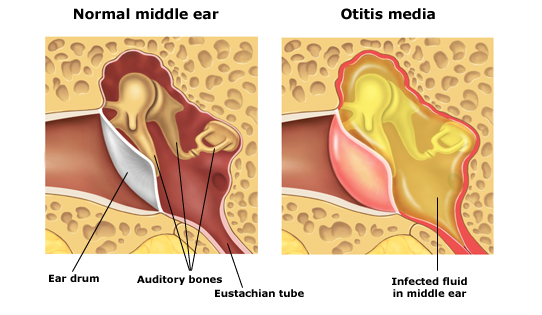Acute bacterial otitis media (ABOM) is a common middle ear infection caused by bacterial pathogens. It predominantly affects children but can also occur in adults, leading to symptoms such as ear pain, hearing difficulties, and fever. Understanding its causes, symptoms, diagnostic methods, and treatment options is essential for effective management and prevention of complications.

Understanding Acute Bacterial Otitis Media
Acute bacterial otitis media is an infection of the middle ear that occurs when bacteria invade the eustachian tube, which connects the middle ear to the throat. This infection typically develops after a respiratory tract infection, allergies, or other factors that cause eustachian tube dysfunction.
Key Risk Factors for Acute Bacterial Otitis Media
- Age: Children under 5 years are most susceptible due to underdeveloped eustachian tubes.
- Respiratory Infections: Common colds often precede the development of ABOM.
- Allergies: Nasal congestion from allergies can impair eustachian tube drainage.
- Environmental Factors: Exposure to smoke, daycare attendance, and bottle-feeding increase risks.
Common Symptoms
Recognizing symptoms early is critical for prompt treatment. Common symptoms include:
- Severe ear pain (otalgia)
- Temporary hearing loss
- Fever
- Irritability (in children)
- Fluid drainage from the ear (otorrhea)
- A feeling of fullness in the ear
Diagnosis
Accurate diagnosis of ABOM involves a combination of medical history evaluation and physical examination.
1. Otoscopy
Otoscopy is the primary diagnostic tool used to examine the ear canal and tympanic membrane. Key findings indicative of ABOM include:
- Bulging or redness of the tympanic membrane
- Fluid behind the eardrum
- Decreased mobility of the tympanic membrane
2. Tympanometry
Tympanometry assesses middle ear function by measuring the mobility of the tympanic membrane in response to air pressure. Reduced mobility suggests fluid buildup.
3. Culture Testing
In severe or recurrent cases, fluid samples from the middle ear may be cultured to identify the specific bacterial pathogen and guide antibiotic therapy.
Causes and Pathogens
The most common bacterial pathogens causing ABOM include:
- Streptococcus pneumoniae: Leading cause of severe cases.
- Haemophilus influenzae: Frequently associated with respiratory infections.
- Moraxella catarrhalis: Common in children and often resolves without antibiotics.
Treatment Options for Acute Bacterial Otitis Media
Effective treatment of ABOM aims to alleviate symptoms, eradicate the infection, and prevent complications.
1. Antibiotic Therapy
Antibiotics are the cornerstone of ABOM treatment. Commonly prescribed antibiotics include:
- Amoxicillin: First-line treatment due to efficacy and safety.
- Amoxicillin-Clavulanate: Used for resistant cases or recurrent infections.
- Cefdinir or Azithromycin: Alternative options for patients with penicillin allergies.
2. Pain Management
Pain relief is crucial for patient comfort. Recommended approaches include:
- Analgesics: Acetaminophen or ibuprofen to reduce pain and fever.
- Topical Anesthetics: Drops such as benzocaine for temporary relief.
3. Surgical Intervention
In recurrent or severe cases, surgical procedures may be necessary:
- Myringotomy: A small incision in the tympanic membrane to drain fluid.
- Tympanostomy Tubes: Placed in the ear to prevent fluid buildup and reduce infection frequency.
Preventing Acute Bacterial Otitis Media
Preventive measures can significantly reduce the risk of ABOM. Recommendations include:
- Vaccination: Pneumococcal and influenza vaccines are effective in lowering ABOM risk.
- Breastfeeding: Provides immunity and reduces ear infection incidence.
- Avoiding Risk Factors: Minimize exposure to secondhand smoke and ensure proper hand hygiene.
Complications of Untreated Acute Bacterial Otitis Media
If left untreated, ABOM can lead to serious complications, including:
- Hearing Loss: Temporary or permanent impairment due to damage to the tympanic membrane or ossicles.
- Mastoiditis: Infection of the mastoid bone, requiring aggressive treatment.
- Chronic Suppurative Otitis Media: Persistent ear infection with ongoing drainage.
- Meningitis: A rare but life-threatening condition when infection spreads to the brain.
Acute bacterial otitis media is a common yet manageable condition when diagnosed and treated promptly. By understanding the risk factors, symptoms, and treatment options, healthcare providers and caregivers can ensure better outcomes and reduce the likelihood of complications. Preventive measures such as vaccination and healthy lifestyle practices further contribute to minimizing the incidence of this condition.

